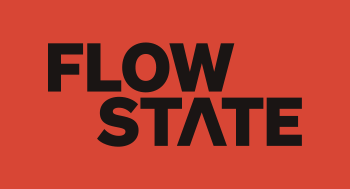PERFORMING UNDER PRESSURE.
We all, myself included, will feel pressure to perform at some point. Whether that be a job interview, school or university exams, driving tests, starting a new business, a police officer attempting to de-escalate a potentially violent situation or public speaking. You may feel pressure giving direct and honest feedback to a trusted friend or highly respected senior work colleague, attempting to score a winning penalty kick in a football competition or making a crucial sales pitch to potential investors.
Preparing yourself to perform under pressure may never have crossed your mind, but it is reported that up to 9 out of 10 people will fail to perform at their expected level, when placed in a pressurised situation. People generally feel pressure when they are in situations where they want to perform to the best of their ability. Typically, this is because they are seeking to attain, or move towards, a reward that has high personal meaning to them. In effect, it isn’t necessarily the situation, but their desire to attain this reward that creates a pressure to perform at their optimal level of performance.
The science behind performing under pressure is actually pretty fascinating. The brain’s threat detection system is a legacy from more primitive times when our ancestors survived by hunting and gathering their own food and water. In these times, when there were other predators threatening our own survival, having an almost instantaneous threat detection system hard-wired into our brains was of real benefit.
However, our brains can perceive threat in almost any situation, not just at times when our very existence may be challenged. As an example, we may view an exam as a potential threat as failure to attain the grades we desire may negatively impact our social status. This system is so efficient that when a threat is detected, evaluated and predicted to exceed our current coping threshold a near-instantaneous stress reaction is triggered. You probably know this as the fight, flight or freeze response.
Within 0.5 seconds of a stress reaction being triggered several chemicals are released into your brain, and body. This flood of chemicals immediately drives several physiological and psychological changes. Many of you will be familiar with the rapid increases in heart rate, sweat rate and breathing rate. Your mouth and throat become dry making it harder to swallow and communicate clearly. Your pupils dilate altering your visual focus and gaze behaviours which typically leads to an increased focus on the perceived threat(s) and an accompanying failure to widen your gaze and identify other important contextual cues that may be beneficial to performance. Complex skills that you previously performed effortlessly, and subconsciously, are now performed with conscious thought resulting in your skill execution appearing clunky, sub-optimal and novice-like.
Doesn’t sound too good, does it? The great news is that specific, evidence-based knowledge and skills can be taught, learnt, and engrained to allow us to thrive under pressure. You can learn to harness and control this powerful stress response, so it works for you rather than against you. With the right training and preparation, you can join the 10% of people who deliver their best when it truly matters the most. This will provide you, your family, your staff, your team or your organisation a competitive advantage over those who are under prepared and see their performance deteriorate under pressure.
There are several specific strategies that can be implemented that will allow you to thrive within your specific pressure environment. Here’s just one of them:
VISUALISATION:
During your preparation take time to mentally visualise yourself performing optimally. Make these thoughts as vivid and detailed as possible for maximum transfer. You can achieve this by visualising specifics such as clothing, is there an audience or crowd and what do they look like, the specifics of the room, venue or stadium, environmental conditions and other external noises that accompany you delivering an optimal performance.
You can also contingency plan through visualisation. The more thorough your contingency planning, the more resilient you will be when you perceive a threat. Visualise what may go wrong and what strategies you could implement to overcome this challenge and counteract your brain identifying a threat and triggering a stress response.
If you would like to gain a competitive advantage, delve deeper into this subject and learn how to optimise your performance under pressure please visit the Flow State website at www.findyourflow.co.nz
Photo by Matt Chesin on Unsplash
